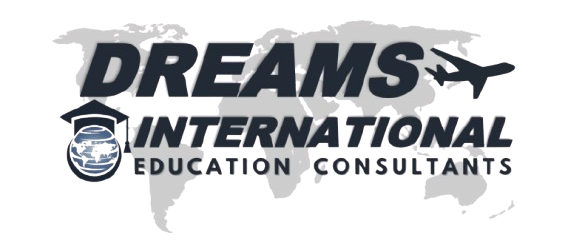USA
The United States is a global leader in higher education and innovation, making it the most popular destination for international students. With a highly flexible education system, top-ranked universities, and unparalleled research facilities, the USA offers students an environment to grow academically, professionally, and personally.
View List
Quick Facts About the USA
Feature | Details |
Capital | Washington, D.C. |
Major Cities | New York, Los Angeles, Chicago, Boston, San Francisco |
Currency | US Dollar (USD) |
Population | Approx. 331 million |
Language | English |
Time Zones | 6 primary time zones across the country |
Climate | Varies by region (continental, tropical, arid, alpine, etc.) |
International Students | 1+ million (largest global host) |
Top Intakes | Fall (Aug/Sep), Spring (Jan), Summer (May – limited) |
No. of Universities | Over 4,000 (public, private, community colleges) |
Visa for Students | F-1 (academic), M-1 (vocational), J-1 (exchange) |
Contact Us
Get in touch with Dream International and start your study abroad journey today!
Benefits
- High-Quality Education: Globally recognized degrees
- Academic Flexibility: Choose and change majors easily
- Work While Studying: On-campus work (20 hours/week)
- STEM OPT Extension: Additional 24 months work for STEM grads
- Networking Opportunities: Access to global industry leaders and alumni
- Cultural Exposure: Learn through diversity and innovation
Why Study in the USA?
The U.S. Education System Explained
The U.S. education system is known for its flexibility, quality, and wide range of program choices. It allows students to tailor their education according to their goals.
Levels of Education
1. Primary and Secondary Education
2. Postsecondary (Higher) Education
Includes:
• Doctoral Degrees (PhD and professional degrees)
Types of Institutions
Institution Type | Description |
Community Colleges | 2-year programs (Associate Degrees), often transfer to 4-year universities |
Liberal Arts Colleges | Focus on undergraduate education in humanities and sciences |
Public Universities | State-funded, lower tuition for residents (e.g., University of California, SUNY) |
Private Universities | Privately funded, often more expensive (e.g., Harvard, Stanford) |
Ivy League Schools | 8 prestigious private universities known for academic excellence |
🎓 Associate Degree
🎓 Bachelor’s Degree (Undergraduate)
🎓 Master’s Degree (Graduate)
🎓 Doctoral Degree (PhD)
Academic Degrees
USA Intakes for International Students – Full Guide
U.S. universities offer three main intakes (admission cycles)for international students each year. Each intake has specific timelines, course availability, and benefits.
1. Fall Intake (August/September) – Primary Intake
Overview:
Application Timeline:
Action | Period |
Research & Prep | Feb – Apr (of the previous year) |
Standardized Tests (IELTS/TOEFL, GRE, SAT) | Mar – Jul |
Applications Open | Aug – Nov |
Deadlines | Dec – Feb |
Decisions Released | Mar – Apr |
Visa Process | May – Jul |
Semester Begins | Aug – Sep |
Advantages:
2. Spring Intake (January) – Secondary Intake
Overview:
Application Timeline:
Action | Period |
Research & Prep | May – Jul |
Standardized Tests | Jun – Sep |
Applications Open | Aug – Oct |
Deadlines | Sep – Nov |
Decisions Released | Oct – Nov |
Visa Process | Nov – Dec |
Semester Begins | Jan |
Advantages:
3. Summer Intake (May/June) – Limited Availability
Overview:
Application Timeline:
Action | Period |
Research & Prep | Oct – Dec |
Applications Open | Dec – Feb |
Deadlines | Feb – Mar |
Visa Process | Apr |
Semester Begins | May – Jun |
Advantages:
How to Choose the Right Intake
Factor | Recommendation |
High scholarship availability | Fall |
Readiness with documents & scores | Fall or Spring |
Want to begin quickly | Spring or Summer |
Applying for specialized or research programs | Fall |
Missed earlier deadlines | Spring |
Short-term or English programs | Summer |
Checklist to Prepare for Any Intake
7. Plan Travel & Accommodation
Application Process
USA Student Visa (F-1) Process
Requirements:
• Interview at US Embassy/Consulate
F-1 Visa Eligibility:
Scholarship Opportunities
Types of Scholarships:
Top Scholarships:
General Eligibility:
Post-Study Work Opportunities
Optional Practical Training (OPT):
H-1B Work Visa:
Career Sectors in Demand:
Top 30 Universities in USA (with World Ranking, Tuition Fees & Courses)
University Name | QS World Rank 2025 | UG Fees (USD/year) | PG Fees (USD/year) | Popular Courses |
MIT | 1 | $55,510 | $53,790 | CS, Engineering, Data Science |
Stanford University | 2 | $56,169 | $54,315 | AI, MBA, CS |
Harvard University | 4 | $54,269 | $52,456 | Law, Business, Medicine |
Caltech | 6 | $58,479 | $55,950 | Physics, Aerospace, CS |
University of Chicago | 10 | $60,552 | $58,812 | Economics, Business |
University of Pennsylvania | 11 | $59,160 | $56,212 | Wharton MBA, Nursing |
Yale University | 13 | $59,950 | $45,700 | Law, Psychology, Literature |
Columbia University | 14 | $65,524 | $62,460 | Journalism, Finance |
Princeton University | 16 | $57,410 | $50,340 | Mathematics, Politics |
Cornell University | 20 | $61,015 | $59,282 | Agriculture, Hotel Mgmt |
Johns Hopkins University | 22 | $60,480 | $57,010 | Public Health, Biology |
Northwestern University | 25 | $62,391 | $55,127 | Journalism, Economics |
University of Michigan | 28 | $53,232 | $48,204 | Engineering, Social Sciences |
UC Berkeley | 30 | $48,465 | $43,584 | EECS, Chemistry |
New York University (NYU) | 35 | $58,144 | $53,222 | Arts, Finance |
Duke University | 38 | $62,688 | $58,031 | Law, Environment |
Carnegie Mellon University | 40 | $59,864 | $50,100 | Robotics, ML |
Brown University | 43 | $62,680 | $58,180 | Biology, Literature |
University of Southern California | 46 | $64,726 | $61,000 | Film, Engg |
University of Washington | 52 | $41,997 | $33,396 | Public Health, CS |
University of California, Los Angeles (UCLA) | 53 | $47,820 | $42,486 | Film, Medicine |
Georgia Tech | 58 | $33,964 | $29,140 | Engineering, AI |
University of Wisconsin-Madison | 65 | $40,124 | $25,506 | Physics, Business |
University of Texas at Austin | 70 | $41,070 | $25,400 | Petroleum Engg, CS |
Boston University | 73 | $63,798 | $61,050 | Health, Business |
University of Illinois Urbana-Champaign | 76 | $37,028 | $30,400 | Engineering, Data Science |
Pennsylvania State University | 83 | $38,651 | $28,500 | Engineering, Accounting |
Purdue University | 89 | $31,104 | $29,132 | Aerospace, AgriTech |
University of Florida | 97 | $28,658 | $25,650 | Business, Pharmacy |
Michigan State University | 112 | $41,778 | $30,000 | Agriculture, Education |
Note: Fees are approximate and may vary by program.
Scholarships for International Students in the USA
Studying in the USA can be expensive, but numerous scholarships and financial aid options are available for international students. These scholarships can cover partial to full tuition, living expenses, and even travel costs in some cases.
Top USA Scholarships for International Students
1. Fulbright Foreign Student Program
2. Hubert H. Humphrey Fellowship
3. AAUW International Fellowships (for Women)
4. Stanford University – Knight-Hennessy Scholars
5. Clark University Global Scholars Program
6. Illinois Wesleyan University Merit Scholarships
7. Yale University Scholarships
General Eligibility Criteria for Scholarships
Career Growth in the USA by Sector
The USA offers excellent career opportunities across multiple sectors, especially for international graduates with U.S. education and work experience. Here’s a breakdown of major sectors and their growth potential:
1. Information Technology (IT) & Software Development
2. Healthcare & Life Sciences
3. Business, Finance & Accounting
4. Engineering (Mechanical, Civil, Electrical, etc.)
5. Data Science & Artificial Intelligence
6. Education & Research
7. Hospitality & Tourism
Permanent Residency (Green Card) Process in the USA
The U.S. Permanent Resident Card (Green Card) allows non-citizens to live and work permanently in the United States. Here’s how international students can transition from an F-1 visa to PR:
1. F-1 Student Visa → OPT
2. OPT → H-1B Work Visa
3. H-1B → Green Card (PR)
Types of US Visas: Detailed Guide with Process, Eligibility & Documents
1. F-1 Visa – Academic Student Visa
Purpose:
To study full-time at a U.S. institution (college, university, high school, language school).
Process:
Eligibility:
Required Documents:
2. M-1 Visa – Vocational/Technical Student Visa
Purpose:
To attend non-academic, vocational, or technical institutions.
Process:
Same as F-1 visa, but with Form I-20M issued by vocational school.
Eligibility:
Required Documents:
Same as F-1, with vocational course details
3. J-1 Visa – Exchange Visitor Visa
Purpose:
For exchange students, research scholars, interns, trainees, and professionals under U.S. government-approved programs.
Process:
Eligibility:
Required Documents:
4. H-1B Visa – Skilled Worker Visa
Purpose:
To work in specialty occupations requiring a bachelor’s or higher degree.
Process:
Eligibility:
Required Documents:
5. L-1 Visa – Intra-Company Transfer Visa
Purpose:
For employees of multinational companies transferring to a U.S. office.
Process:
Eligibility:
Required Documents:
6. O-1 Visa – Extraordinary Ability Visa
Purpose:
For individuals with extraordinary ability in arts, science, business, education, or sports.
Process:
Eligibility:
Required Documents:
7. Dependent Visas
Visa | For | Eligibility | Work Rights | Required Docs |
F-2 | Spouse/children of F-1 | Proof of relation | ❌ No work | Passport, I-20, marriage/birth certificate |
H-4 | Spouse/children of H-1B | I-797 of H-1B holder | ✅ Yes (if EAD eligible) | Marriage certificate, I-539 form |
J-2 | Dependents of J-1 | Valid J-1 status | ✅ With EAD | DS-2019, EAD, passport |
L-2 | Dependents of L-1 | Valid L-1 approval | ✅ Yes (auto work permit) | I-797 of L-1, marriage certificate |
8. Green Card (Permanent Residency)
Purpose:
To live and work permanently in the USA.
Process:
Eligibility Categories:
Required Documents:
Summary
Visa | Purpose | Eligibility | Can Work? | PR Path |
F-1 | Academic study | Admission in SEVP school | ✅ Limited (OPT) | ✅ (via H-1B) |
M-1 | Vocational study | Admission in technical school | ❌ | ❌ |
J-1 | Exchange program | Program sponsor | ✅ Conditional | ❌ (unless waiver granted) |
H-1B | Skilled work | Bachelor’s + job offer | ✅ | ✅ (EB-2/3) |
L-1 | Intra-company transfer | Manager or expert | ✅ | ✅ (EB-1C) |
O-1 | Extraordinary ability | Proven acclaim | ✅ | ✅ (EB-1A) |
F-2 / H-4 / J-2 / L-2 | Dependents | Relationship proof | ✅ Some | ✅ With primary holder |
EB Green Card | PR | Employer/family sponsorship | ✅ | ✅ |
B-1/B-2 | Business/tourism | Visit purpose | ❌ | ❌ |

